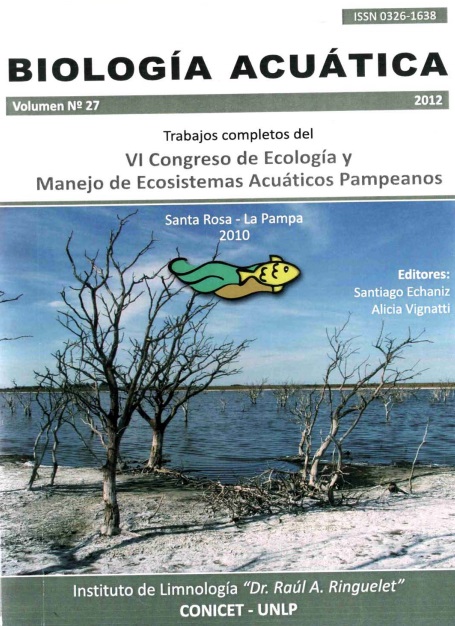La calidad del agua del Río Luján (Buenos Aires) y el potencial aporte del biofilm para su evaluación
Keywords:
Luján River, Argentina, Biofilm, water qualityAbstract
Luján River rises in the north-eastern part of Buenos Aires Province and flows through a lowland region where it joins the River Plate Estuary. The river’s upper basin comprises a rural area which is mainly used for extensive agriculture and livestock with industrial areas of minor influence. As moving downstream, densely populated urban regions develop and industrial activity increases. Samples were collected seasonally from August 2004 to August 2005 in 12 sampling sites located along the river basin, from its headwater tributaries (Los Leones y El Durazno streams) to the crossing of the national route 9, located in the river’s lower basin. In two out of the four sampling occassions, biofilm samples were taken with the aim of assesing to what extent the biofilm community fitted the degradation level indicated by the measured physical-chemical variables of the river water (particularly BOD; N; P and DO concentrations). The samples were taken with a 3 cm2 brush and piston from submerged surfaces of natural (“tosca”) or artificial substrates (piers; walls). Bacillariophyta generally dominates the biofilm, but there seems to be a relationship between the industrial and urban sewage discharges, the water quality and the relative abundance of the different biofilm groups. In the river reaches where a heavy load of effluents is discharged, an increment of Cyanophyceae is observed. In the reaches of intermediate degradation, associations of cyanophytes and euglenoids appear. Over the course of the river, the algae abundance diminishes along with the water quality degradation, but there are also reaches of recovery due to the river’s own processing capacity where no urban nor industrial wastewaters are discharged.





















